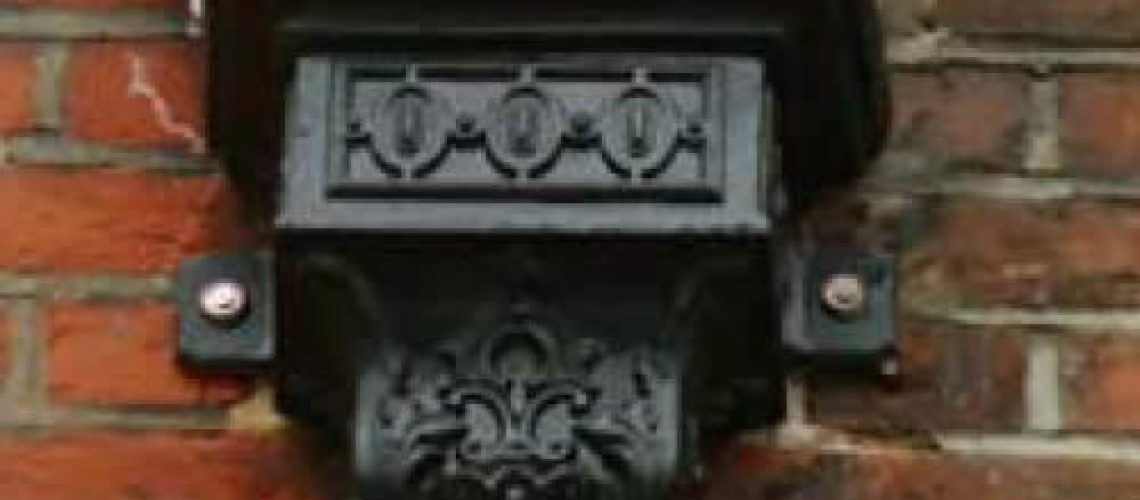


The London Borough of Waltham Forest‘s vision to shape the Borough by providing quality space where people want to live, work, invest and visit, also encompasses restoring its diverse architectural heritage. Walthamstow is currently benefiting from a Heritage Economic Regeneration Scheme (HERS) supported by English Heritage and the New Opportunities for Walthamstow Single Regeneration Budget, whereby generous grants are being offered to property owners and lessees in the town centre for quality exterior restorations.
Walthamstow is home to a number of famous historical figures including Victorian designer, William Morris (1834 – 1896), and has a remarkable cross-section of buildings covering a period of 900 years, making it an important area for conservation and enhancement.
The Heritage Economic Regeneration Scheme provides new opportunities for Walthamstow town centre since many of the late Victorian properties need specialist components and require expert knowledge to oversee and carry out the restoration work to their external fabric.
The conservation area to benefit from the scheme is Walthamstow St. James, where several high street shops and the Victorian pub the ‘The Cock Tavern’ have already taken advantage of the grant program to improve and restore their building frontages.
Most recently, Mr V C Amin, proprietor of independent high street opticians received a HERS grant to restore the ornate late Victorian frontage of his premises, including restoring and replacing the decorative Victorian rainwater hopper heads.
It was decided that because one of the few remaining original cast iron hopper heads survived in-situ, it was to be restored because of its historical value, and the other lost one was replaced with a replica cast iron hopper head. Martin Rispin, Conservation Heritage Projects Officer of Waltham Forest Borough Council explains: ‘Dealing with Amin Opticians was an enjoyable and rewarding exercise as the ornate building was largely intact but needed some specialist restoration work plus a new sympathetic shop front, fascia, and security shutter to make it stand out as an exemplar of the standards that the HERS Programme is seeking to promote throughout our scheme area’.
Martin Rispin contacted Tuscan Foundry Products in West Sussex which specialise in cast iron rainwater products, to restore the original hopper head and copy its original Victorian design to produce a small number of replica cast iron hopper heads for use elsewhere within the conservation area, including reinstatement on Amin Opticians to complement the remaining original one.
Paul Stenning, of Tuscan Foundry Products, was delighted: “It is so important to restore cast iron architecture to retain the historical value of buildings. These Victorian hopper heads may have been cast at a local foundry that also provided other buildings in the area with cast-iron rainwater goods. As many of the old foundries have declined, skilled craftsmanship is needed to restore cast iron architectural features like these hopper heads. Tuscan Foundry Products used the original hopper to replicate the design exactly”, with new bespoke hoppers.
These particular hopper heads are associated with a very important family living in Walthamstow in the nineteenth century. The Warner family were influential property owners and developers who built the Warner shops in the High Street (as well as many houses in the surrounding area) and created distinctive architectural features in the form of decorative cast iron hopper heads and striking mythical terracotta griffins. Sadly, over time the original 50+ griffins have been stolen or deteriorated. However, heritage improvement grants have been used to restore two of the mythical griffins and they can now be seen on their original perch outside Amin Opticians. Sufficient reproductions have been commissioned to allow for full reinstatement over the coming years. The restoration and replication of the original Victorian hopper head took Tuscan
Foundry Products a month to create, Paul Stenning explains the process: “The original hopper head had so much historical value it was hand-delivered to us by Martin Rispin, Heritage Projects Officer of Waltham Forest Borough Council. The hopper head was carefully shot blasted to strip away the years of damage right back to the bare metal. The decorative pattern was then hand carved into the wood to ensure the details were perfectly matched to create the moulds for the replica cast iron hopper heads. Both the original and replica hopper heads were then painted to protect them from rust”.
The restoration of the original hopper head and the production of the replica hopper heads were carefully monitored by English Heritage. Charles Wagner, Historic Areas Adviser, London Region comments: “The reinstatement of the hopper heads and the griffin finials is an important element of the HERS because we are putting back the unique features of the buildings, something of the local distinctiveness that gave Walthamstow High Street its character. When replicating these ornate nineteenth-century features, we insist that the replicas are exact copies, and both the hopper heads and the griffins are. This restoration is economically non-beneficial to the shop owners, so a high rate of grant aid is necessary. We are funding these works as part of a package of works to repair the external envelopes of these commercial buildings in the St James Conservation Area as part of the major regeneration of Walthamstow.”
The cast iron hopper heads are now installed and contribute to the High Street’s architecture and historic interest, as well as demonstrating the achievements of Waltham Forest Borough Council’s Heritage Economic Regeneration Scheme.
Martin Rispin concludes: ‘It is always a pleasure to identify and work alongside traditional craftsmen, such as Tuscan Foundry Products, who are able to both restore and authentically replicate original features in appropriate materials that are suitable for high quality restoration programmes’.